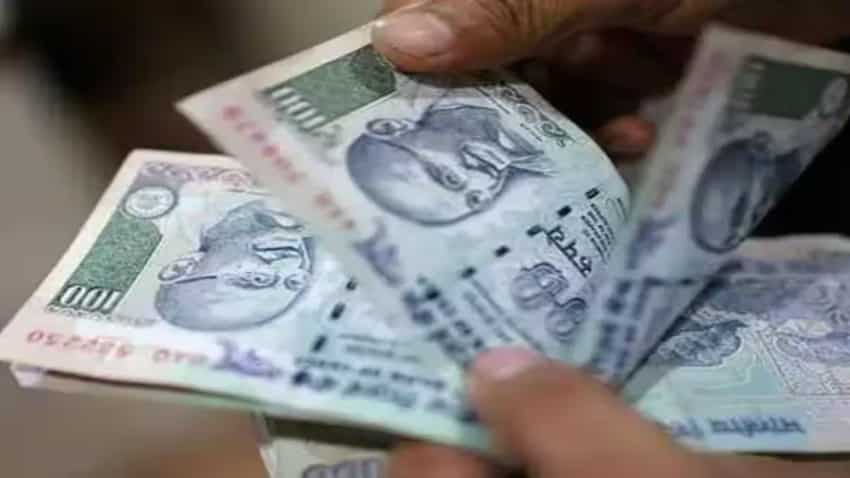Union Budget 2025: From 97.75% tax to Rs 12 lakh tax-free income; here's how income tax slabs have changed in India since Independence in 1947
Union Budget 2025: Finance Minister Nirmala Sitharaman gave relief to a large number of new tax regime taxpayers as in her Budget 2025 speech on Saturday (February 1, 2025), she said that earners up to Rs 12 lakh annual income wouldn't have to pay any tax. The income tax structure has gone through many changes India's independence.
Income Tax Slabs, Union Budget 2025, Budget Expectations: The most important part of the budget speech of Finance Minister Nirmala Sitharaman on Saturday (February 1, 2025) was her announcement about income tax slabs in the new tax regime. She gave relaxation in taxation to new regime taxpayers as Nirmala Sitharaman said that the taxpayers with up to Rs 12 lakh annual income didn't have to pay any tax. Such salaried class taxpayers can also avail benefits of a Rs 75,000 standard dedcution. With that, the tax-free income limit for a salaried class rises up to Rs 12.75 lakh a financial year. There was no change in tax slabs of the old tax regime. Rising the tax-free income to Rs 12 lakh, Sitharaman made one of the key changes in India's income tax history. Here, we take you through important changes that India's tax structure has gone through since independence in 1947.
Photos: Unsplash/Pixabay/Pexels
Income tax slab revision by John Mathai in 1949-50

Finance Minister John Mathai made the first tax slab change in independent India when he reduced tax on incomes up to Rs 10,000 by a quarter of an anna in two slabs.
In the 1st tax slab, he reduced it from one anna to nine pies, and in the 2nd tax slab, he reduced it from two annas to one nine pies.
It was the time when one anna was equal to Rs 1/16, while Rs 1 had 192 pies.
Income tax slab revision by YB Chavan in 1974-75

Finance minister Chavan made a significant change in the tax slab when he cut the maximum marginal rate from 97.75 per cent (the highest-ever) to 75 per cent.
Taxpayers earning income up to Rs 6,000 a year were kept outside the ambit of income tax.
However, a 70 per cent marginal rate of basic income tax was introduced on the slab over Rs 70,000/year.
The highest tax slab in that budget was kept at 77 per cent.
Income tax slab revision by VP Singh in 1985-86

The major change he made was that he decreased the number of income tax slabs from 8 to 4.
Taxpayers with an annual income of less than Rs 18,000 were kept out the tax ambit.
On Rs 18,001 to Rs 25,000, a 25 per cent income tax was fixed; for the Rs 25,001 to Rs 50,000 income group, tax was fixed at 30 per cent. On Rs 50,001 to Rs 1 lakh income, it was 40 per cent, while for income above Rs 1 lakh, it was 50 per cent, which earlier used to be 61.87 per cent.
Income tax slab revision by Manmohan Singh in 1992-93

Income tax slab revision by Manmohan Singh in 1994-95

Income tax slab revision by P. Chidambaram in 1997-98

P Chidambaram announced a 'Dream Budget', in which he reduced the tax limit from 15, 30, and 40 per cent to 10, 20, and 30 per cent, respectively.
The first slab of 10 per cent was for the Rs 40,000-Rs 60,000 income group; 20 per cent tax was for the Rs 60,000-Rs 1.50 lakh income group; and the 30 per cent was for income above Rs 1.50 lakh.
Apart from that, the standard deduction limit was also increased to Rs 20,000 for all salaried taxpayers.
Income tax slab revision by Pranab Mukherjee in 2010-11

Income tax slab revision by Pranab Mukherjee in 2012-13

In the budget, he increased the tax exemption limit to Rs 2 lakh.
There was a 10 per cent tax levied for salaried people in the range of Rs 2 lakh and Rs 5 lakh.
Those earning between Rs 5 lakh and Rs 10 lakh would pay a tax of 20 per cent and those earning above Rs 10 lakh would be paying 30 per cent tax.
Income tax slab revision by Arun Jaitley in 2014-15

Income tax slab revision by Arun Jaitley in 2017-18

He brought income between Rs 2.50 lakh and Rs 5 lakh under the 5 per cent income tax bracket from earlier 10 per cent.
The rebate under Section 87A of the Income Tax Act, 1961 (which had been given to people earning up to Rs 5 lakh) was reduced to Rs 2,500 from Rs 5,000 for people earning between Rs 2.50 lakh and Rs 3.50 lakh.
Threshold limit changed by Piyush Goyal in 2018-19

Income tax slab revision by Nirmala Sitharaman in 2019-20

New tax regime announcement by Nirmala Sitharaman in 2020

Nirmala Sitharaman increases standard deduction and introduces new tax slabs

Nirmala Sitharaman increases standard deduction and introduces new tax slabs

There was no tax up to Rs 3 lakh annual income in the new tax regime.
There would be 5% tax on income up to Rs 3 lakh-Rs 7 lakh in the new tax regime.
There would be 10% tax on income up to Rs 7 lakh-Rs 10 lakh in the new tax regime.
There would be 15% tax on income up to Rs 10 lakh-Rs 12 lakh in the new tax regime.
There would be 20% tax on income up to Rs 12 lakh-Rs 15 lakh in the new tax regime.
There would be 30% tax on income above Rs 15 lakh in the new tax regime.
Nirmala Sitharaman raises income tax-free income limit to Rs 12 lakh in Budget 2025

Revised tax slabs in new tax regime in Budget 2025

- Nil tax in the new regime on income up to Rs 0-4 lakh
- 5% tax in the new regime on income up to Rs 4-8 lakh
- 10% tax in the new regime on income up to Rs 8-12 lakh
- 15% tax in the new regime on income up to Rs 12-16 lakh
- 20% tax in the new regime on income up to Rs 16-20 lakh
- 25% tax in the new regime on income up to Rs 20-24 lakh
- 30% tax in the new regime on income above Rs 24 lakh
Tax slabs before revision (not applicable anymore)

For income 0-Rs 3 lakh
There was no income tax.
For income Rs 3 lakh-Rs 7 lakh
The tax rate was 5 per cent
For income Rs 7 lakh-Rs 10 lakh
The tax rate was 10 per cent
For income Rs 10 lakh-Rs 12 lakh
The tax rate was 15 per cent
For income Rs 12 lakh-Rs 15 lakh
The tax rate was 20 per cent
For income Rs 15 lakh+
The tax rate was 30 per cent




